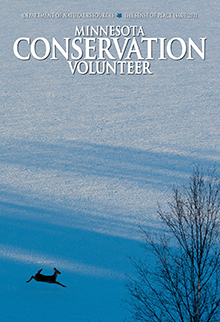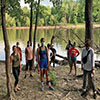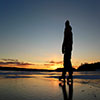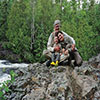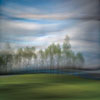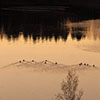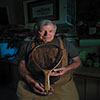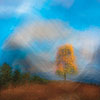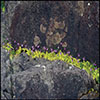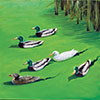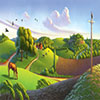Searching for Butterwort
“First jack-in-the-pulpit…”“I heard a red-winged blackbird this morning.”And so it goes. One of our most memorable firsts occurred on Lake Superior’s North Shore, which ranks high in the pantheon of places we like to visit. Over the years we’ve seen moose, deer, wolves, and countless wildflowers that Anna has spotted, identified, and cataloged.
In late May 2021, we were hiking with friends on a 5½-mile section of the Superior Hiking Trail near Schroeder. The trail skirted a bog, where Anna found calla lilies, the ubiquitous bluebead lily, and bog laurel. We were also on the lookout for the pitcher plant and sundew, insectivorous plants that we’d learned were common in northern Minnesota bogs. We searched for both species but found neither. Enchanted by the possibility of finding meat-eating plants, Anna later consulted Phyllis Root’s book Searching for Minnesota’s Native Wildflowers. According to Root, “Butterwort, found in rocky cracks and crevices along Lake Superior’s North Shore, has shiny-looking leaves covered with sticky droplets. When an unsuspecting insect lands on the leaf, it sticks fast. The leaf slowly curls around the insect and absorbs it. One of Minnesota’s arctic relics, this is the rarest insect-eating plant in the state.”
We quickly realized that the ancient, craggy basalt shoreline in front of our rented cabin was prime habitat for butterwort. We walked the shoreline, treading carefully, eyes down, searching for lime green leaves. But we found nothing remotely resembling the rare arctic relic. Then, on a drive from our rental to Grand Marais, a trip we’d made countless times over the years, we noticed a sign we’d never seen before that read Butterwort Cliffs. You can’t make up coincidences like that. We pulled over to investigate. Butterwort Cliffs is a state scientific and natural area, but we found it was temporarily closed due to its status as a sanctuary for nesting herring gulls and peregrine falcons.Frustrated, we continued to Grand Marais. On the way, Anna visited the Minnesota Wildflowers website, which told us, “Butterwort is one of Minnesota’s 15 carnivorous plants that capture insects for nourishment. … P. vulgaris is a circumboreal species restricted to cold, rocky cliffs and boulders found at higher elevations, and along the northern stretches of Lake Superior’s shoreline. … According to the DNR, it was listed as a species of special concern in 1984 due to its limited available habitat, at risk from development and trampling from recreational activities along the North Shore.”Comments posted by fellow plant sleuths described where they’d found the rare plant. In 2013, one sleuth declared, “I photographed and identified a small group of this species growing in a rocky area on the Lake Superior coast, near the Grand Marais breakwater.”
Again, you cannot make up a coincidence like that. We headed to the breakwater. The day was cold and blustery. Traversing the jagged outcrops required focus and attention. Occasionally we paused to look out over the slate gray waters. The waves made foamy peaks before crashing against the shore. If the vista didn’t make us feel alive, the wind chill certainly did. Finally, we noticed small clefts in the basalt where soil and plants had gathered and found purchase. There were several of these across the breakwater. We moved carefully, each in our own direction, searching among the clefts.
We were cold and growing colder. We were ready to call off the search and retreat to our car when I stumbled onto a small, remote, virtually invisible crevice. There, hidden among some tough grasses and other small plants, was a colony of butterwort. I yelled. Anna knew by the tone of my voice I’d found the arctic relic. First. But she was excited for me anyway, and we spent some time admiring the small colony. Later, returning along the breakwater, Anna glimpsed a golden flash in a clump of alder. “Evening grosbeak!” she called out. The first of the season.


